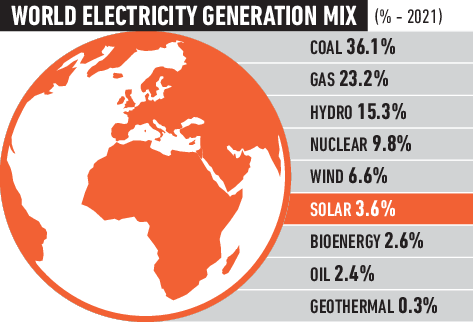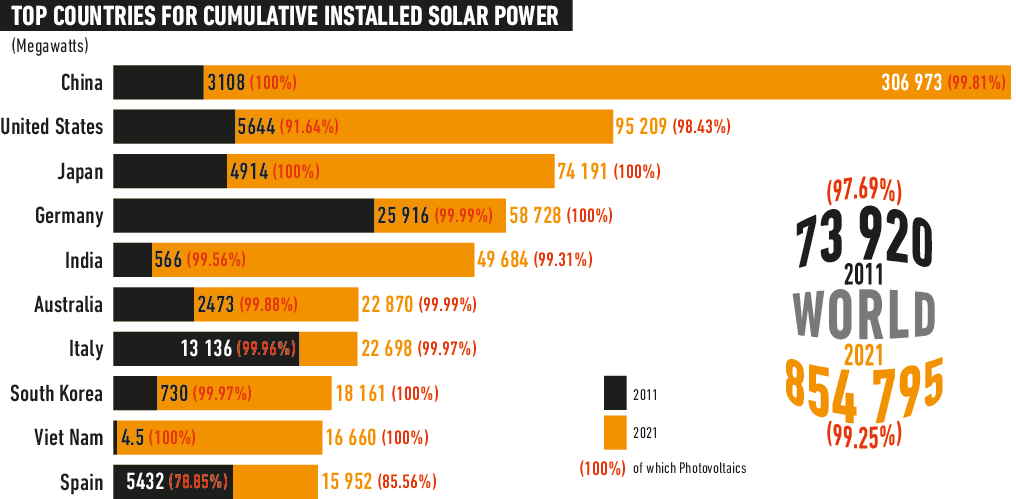
Energy Sources: Solar
By solar energy, we mean the radiation that comes from our star and reaches our planet. It may be hard to believe, but the amount of energy that reaches Earth in an hour is enough to meet global energy needs for an entire year!
At present, current technologies allow for a very limited harnessing of this potential. Solar energy can be converted into heat (via concentrated mirrors or panels flowing with special fluids) or electricity (through photovoltaic panels consisting of semiconductor materials such as silicon).
Although technological advancements are improving yields, at present solar still contributes to a small portion of the world's lectrivity mix.
Solar photovoltaics in particular has been very dynamic in recent years thanks to progresses in technology, lower industrial and domestic system prices, and government incentives in various countries. Therefore, its use is growing exponentially across the world, with global solar capacity that has increased from just over 1 Gigawatt in 2001 to approximately 855 Gigawatts in 2021, and has more than doubled in the last 5 years alone.
- BP, Statistical Review of World Energy 2022;
- EIA (US Energy Information Administration), International Energy Statistics;
- IEA (International Energy Agency), World Energy Outlook 2022;
- IRENA (International Renewable Energy Agency), Renewable Energy Statistics 2022 [Last accessed 11 January 2023]
